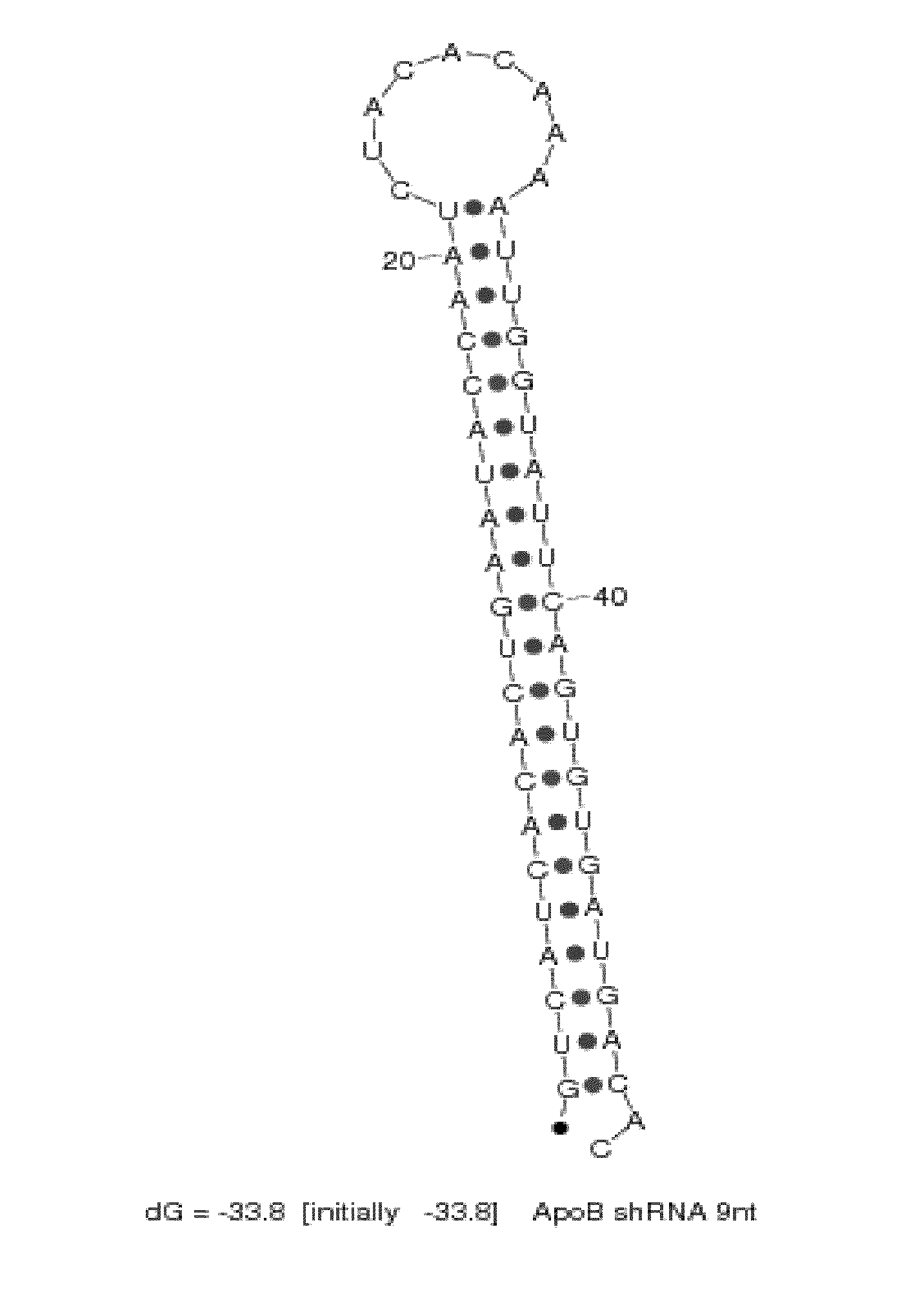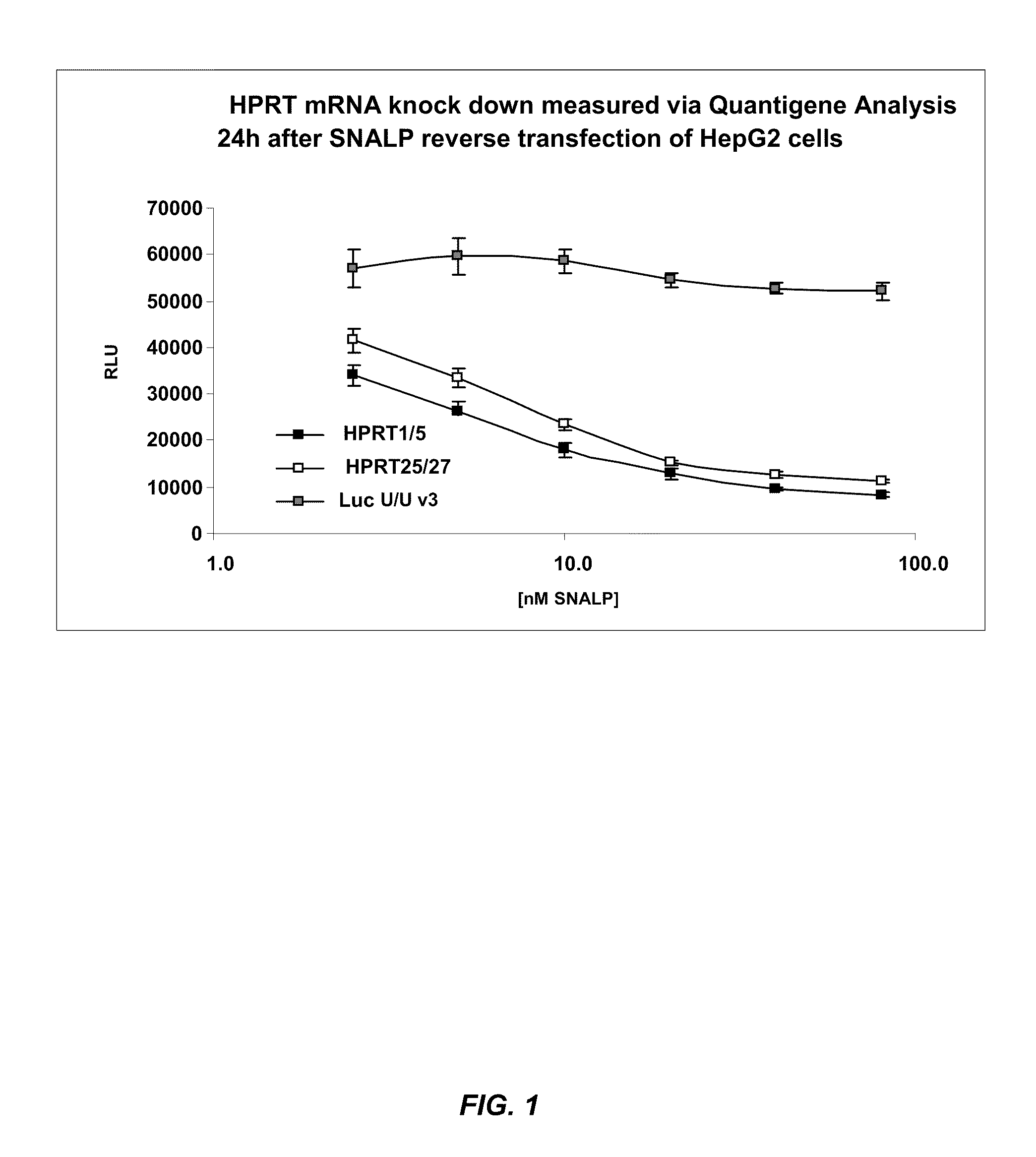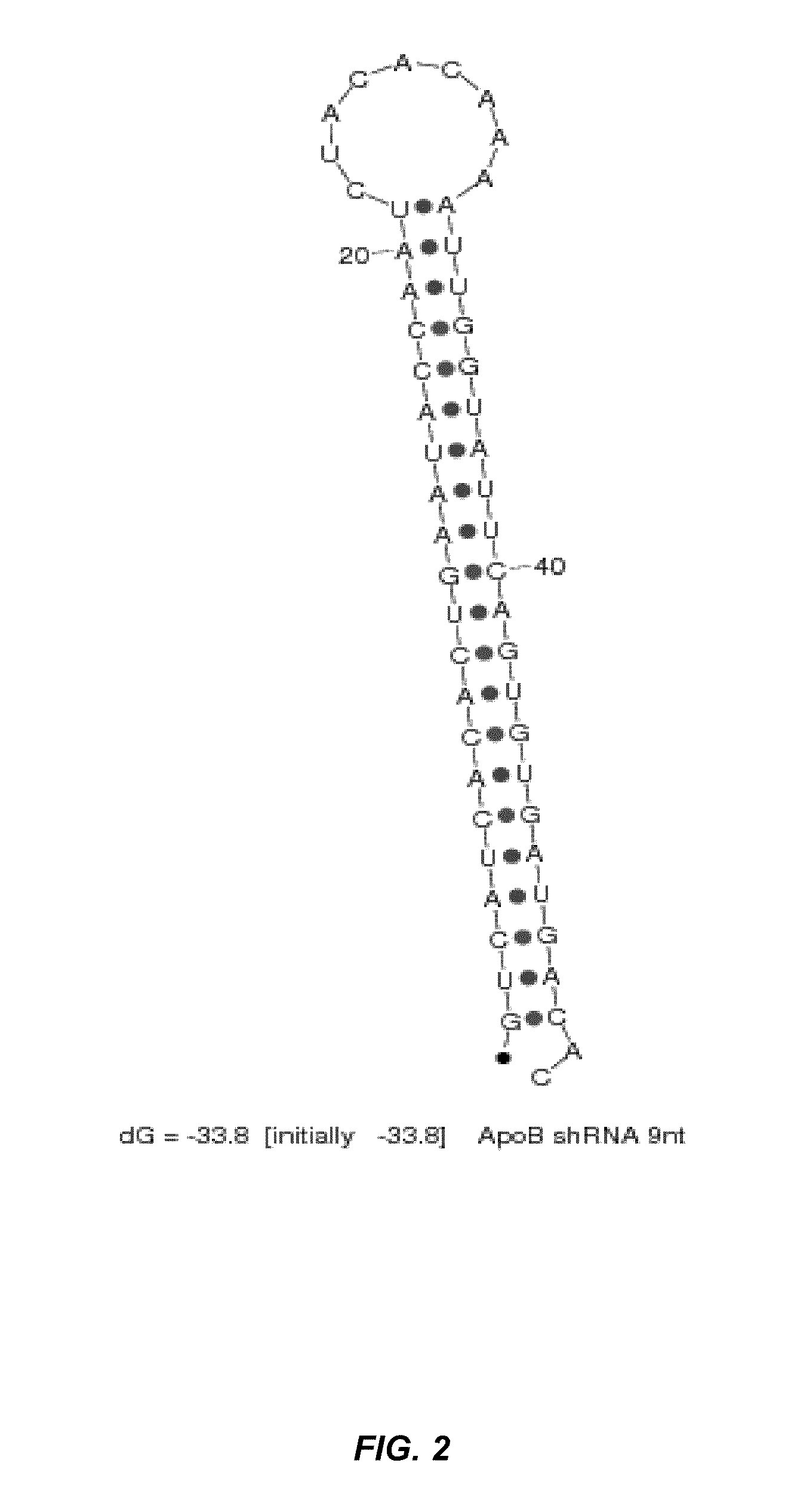Lipid encapsulated dicer-substrate interfering RNA
a technology of dicer substrate and lipid encapsulation, which is applied in the field of lipid encapsulated dicer substrate interfering rna, can solve the problems of immune response, potential reversion, and variability of limitations
- Summary
- Abstract
- Description
- Claims
- Application Information
AI Technical Summary
Benefits of technology
Problems solved by technology
Method used
Image
Examples
example 1
Materials and Methods
[0275]Interfering RNA: Dicer-substrate dsRNA or shRNA molecules used in these studies were chemically synthesized and annealed using standard procedures.
[0276]Lipid Encapsulation of Interfering RNA: In some embodiments, Dicer-substrate dsRNA or shRNA molecules may be encapsulated into stable nucleic acid-lipid particles (SNALP) composed of the following lipids: the lipid conjugate PEG-cDMA (3-N-[(-Methoxypoly(ethylene glycol)2000)carbamoyl]-1,2-dimyristyloxypropylamine); the cationic lipid DLinDMA (1,2-Dilinoleyloxy-3-(N,N-dimethyl)aminopropane); the phospholipid DPPC (1,2-Dipalmitoyl-sn-glycero-3-phosphocholine; Avanti Polar Lipids; Alabaster, Ala.); and synthetic cholesterol (Sigma-Aldrich Corp.; St. Louis, Mo.) in the molar ratio 1.4:57.1:7.1:34.3, respectively. In other words, Dicer-substrate dsRNA or shRNA may be encapsulated into SNALP of the following “1:57” formulation: 1.4% PEG-cDMA; 57.1% DLinDMA; 7.1% DPPC; and 34.3% cholesterol.
[0277]In other embodim...
example 2
Comparison of Dicer-Substrate dsRNA and siRNA SNALP Formulations
[0281]SNALP formulations (1:57 formulation: 1.4% PEG-cDMA; 57.1% DLinDMA; 7.1% DPPC; and 34.3% cholesterol) were prepared with a Dicer-substrate dsRNA or an siRNA targeting hypoxanthine guanine phosphoribosyltransferase 1 (HPRT1) (Genbank Accession No. NM—000194) as the nucleic acid component. The Dicer-substrate dsRNA and siRNA sequences used in this study are provided in Table 1. In particular, the Dicer-substrate dsRNA has an asymmetric structure which comprises a 25-mer sense strand that includes 2 DNA residues on the 3′-end and a 27-mer antisense strand that includes a 2-base 3′-overhang. The antisense strand is selectively modified such that 2′OMe modifications are placed at positions 9, 11, 13, 15, 17, 19, 21, 23, 25, 26, and 27 in the sequence. The corresponding 21-mer siRNA targeting HPRT1 mRNA contains 2-base 3′-overhangs on both strands of the molecule.
TABLE 1Dicer-substrate dsRNA and siRNA sequences that tar...
example 3
Comparison of shRNA and siRNA SNALP Formulations
[0283]SNALP formulations (2:40 formulation: 2% PEG-cDMA; 40% DLinDMA; 10% DPPC; and 48% cholesterol) were prepared using a syringe press method at a 25:1 lipid:drug ratio with a chemically synthesized shRNA or an siRNA targeting ApoB as the nucleic acid component. The shRNA and siRNA sequences used in this study are provided in Table 2. In particular, the shRNA targeting ApoB mRNA contains a 9 nucleotide hairpin loop (“ApoB1-9loop shRNA”) as shown in FIG. 2. There are a total of 21 nucleotides in the double-stranded region of the ApoB shRNA and the antisense strand includes a 2-base 3′-overhang. The corresponding ApoB siRNA and an ApoB mismatch control siRNA contain a blunt end at the 3′-end of the sense strand and a 2-base 3′-overhang on the antisense strand of the molecule.
TABLE 2shRNA and siRNA sequences that target human ApoB gene expression.SEQ IDNO.ApoB shRNA Target / Sense Strand Loop Antisense Strand (5′→3′)GUCAUCACACUGAAU...
PUM
| Property | Measurement | Unit |
|---|---|---|
| diameter | aaaaa | aaaaa |
| mol % | aaaaa | aaaaa |
| mol % | aaaaa | aaaaa |
Abstract
Description
Claims
Application Information
 Login to View More
Login to View More - R&D
- Intellectual Property
- Life Sciences
- Materials
- Tech Scout
- Unparalleled Data Quality
- Higher Quality Content
- 60% Fewer Hallucinations
Browse by: Latest US Patents, China's latest patents, Technical Efficacy Thesaurus, Application Domain, Technology Topic, Popular Technical Reports.
© 2025 PatSnap. All rights reserved.Legal|Privacy policy|Modern Slavery Act Transparency Statement|Sitemap|About US| Contact US: help@patsnap.com



